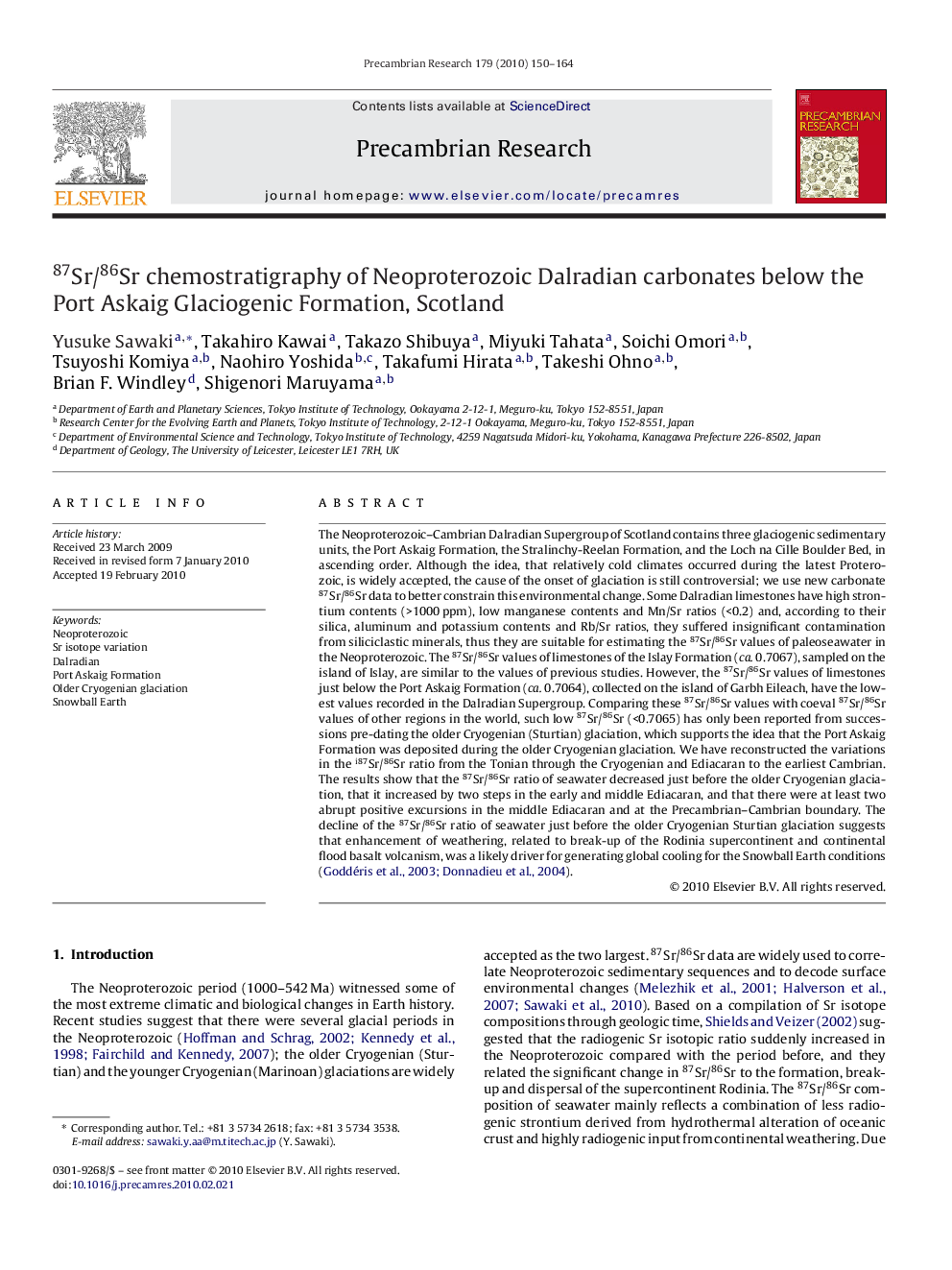| کد مقاله | کد نشریه | سال انتشار | مقاله انگلیسی | نسخه تمام متن |
|---|---|---|---|---|
| 4723936 | 1639679 | 2010 | 15 صفحه PDF | دانلود رایگان |

The Neoproterozoic–Cambrian Dalradian Supergroup of Scotland contains three glaciogenic sedimentary units, the Port Askaig Formation, the Stralinchy-Reelan Formation, and the Loch na Cille Boulder Bed, in ascending order. Although the idea, that relatively cold climates occurred during the latest Proterozoic, is widely accepted, the cause of the onset of glaciation is still controversial; we use new carbonate 87Sr/86Sr data to better constrain this environmental change. Some Dalradian limestones have high strontium contents (>1000 ppm), low manganese contents and Mn/Sr ratios (<0.2) and, according to their silica, aluminum and potassium contents and Rb/Sr ratios, they suffered insignificant contamination from siliciclastic minerals, thus they are suitable for estimating the 87Sr/86Sr values of paleoseawater in the Neoproterozoic. The 87Sr/86Sr values of limestones of the Islay Formation (ca. 0.7067), sampled on the island of Islay, are similar to the values of previous studies. However, the 87Sr/86Sr values of limestones just below the Port Askaig Formation (ca. 0.7064), collected on the island of Garbh Eileach, have the lowest values recorded in the Dalradian Supergroup. Comparing these 87Sr/86Sr values with coeval 87Sr/86Sr values of other regions in the world, such low 87Sr/86Sr (<0.7065) has only been reported from successions pre-dating the older Cryogenian (Sturtian) glaciation, which supports the idea that the Port Askaig Formation was deposited during the older Cryogenian glaciation. We have reconstructed the variations in the i87Sr/86Sr ratio from the Tonian through the Cryogenian and Ediacaran to the earliest Cambrian. The results show that the 87Sr/86Sr ratio of seawater decreased just before the older Cryogenian glaciation, that it increased by two steps in the early and middle Ediacaran, and that there were at least two abrupt positive excursions in the middle Ediacaran and at the Precambrian–Cambrian boundary. The decline of the 87Sr/86Sr ratio of seawater just before the older Cryogenian Sturtian glaciation suggests that enhancement of weathering, related to break-up of the Rodinia supercontinent and continental flood basalt volcanism, was a likely driver for generating global cooling for the Snowball Earth conditions ( Goddéris et al., 2003 and Donnadieu et al., 2004).
Journal: Precambrian Research - Volume 179, Issues 1–4, May 2010, Pages 150–164